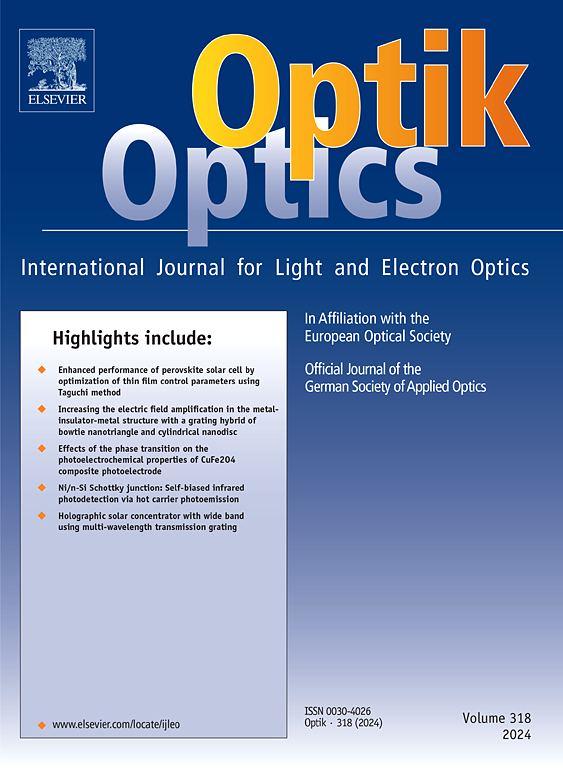Impact of Sn-Sr co-doping on structural, morphological and optical properties of TiO2 for solar energy conversion applications
IF 3.1
3区 物理与天体物理
Q2 Engineering
引用次数: 0
Abstract
In this study, undoped and tin (Sn), strontium (Sr) single and co-doped titanium dioxide (TiO2) nanoparticles were prepared by the sol-gel technique for potential dye-sensitized solar cell (DSSC) applications. Structural analysis using X-ray diffraction and Laser-Raman spectroscopy substantiated the presence of the anatase phase within a tetragonal crystal system in all prepared samples, with a transition to the rutile phase observed in Sn, Sr-co-doped TiO2. FTIR spectra indicated peak shifts, demonstrating the interaction between the dopants and TiO2 lattices. UV-DRS analysis revealed a shift in the optical absorption edge towards the visible region, while the calculated values of the band gap aligned with these findings. Photoluminescence emission intensity was lower in doped TiO2 samples compared to undoped TiO2, indicative of improved DSSC efficiency. When employed as active photoanodes in DSSC fabrication, equimolar Sn and Sr co-doped TiO2 achieved an efficiency of 3.35 %, surpassing the efficiencies of undoped TiO2 (0.56 %), Sn-doped TiO2 (1.62 %), and Sr-doped TiO2 (0.59 %). These findings suggest the potential of co-doping TiO2 with Sn and Sr to enhance DSSC performance.
求助全文
约1分钟内获得全文
求助全文
来源期刊

Optik
物理-光学
CiteScore
6.90
自引率
12.90%
发文量
1471
审稿时长
46 days
期刊介绍:
Optik publishes articles on all subjects related to light and electron optics and offers a survey on the state of research and technical development within the following fields:
Optics:
-Optics design, geometrical and beam optics, wave optics-
Optical and micro-optical components, diffractive optics, devices and systems-
Photoelectric and optoelectronic devices-
Optical properties of materials, nonlinear optics, wave propagation and transmission in homogeneous and inhomogeneous materials-
Information optics, image formation and processing, holographic techniques, microscopes and spectrometer techniques, and image analysis-
Optical testing and measuring techniques-
Optical communication and computing-
Physiological optics-
As well as other related topics.
 求助内容:
求助内容: 应助结果提醒方式:
应助结果提醒方式:


